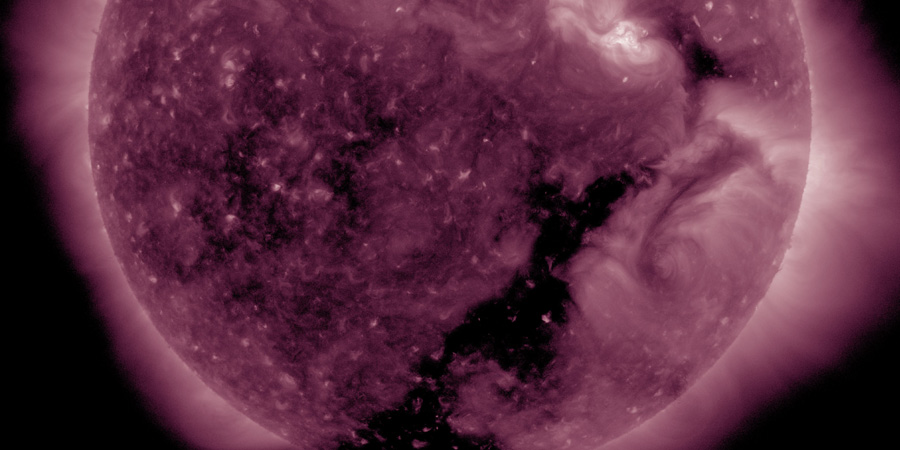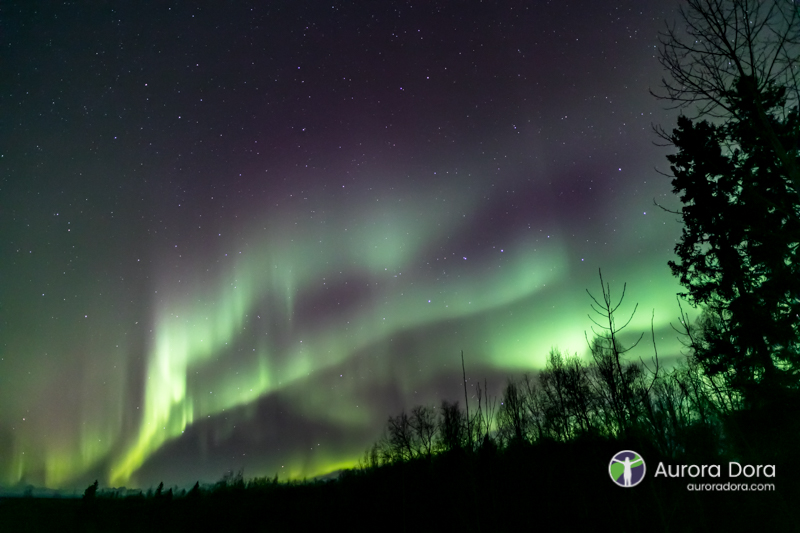The past, the present and the future
Monday, 27 November 2017 17:10 UTC

We've been a bit more quiet than you're used to from us during the past few weeks but our team is once more at full capacity ready to bring you the latest space weather updates. Without any further ado, let's get started!
The past
Solar activity has been pretty low the past few weeks without any significant sunspot regions or solar flares to report on but we did had the occasional coronal hole facing our planet. These solar wind streams were responsible for active conditions on 15 and 25 November and on 21 November we had a couple of periods where we reached the minor G1 geomagnetic storm threshold. Some nice auroral displays were reported around the world and Aurora Dora was so kind to share this image with us made on 21 November from Alaska. Well done!

If you follow us on Twitter or receive the push alerts you of course already know this. Our automated coronal hole alert system did it's job perfectly every time a coronal hole faced our planet so you knew exactly when there was a chance for enhanced auroral conditions. On the subject of coronal holes: we even introduced a new home made coronal hole map which updates automatically every hour. We post this map on Twitter during a coronal hole alert and you can also find it on the coronal hole page... but more on that later.
The present
Solar activity remains very low today with only one numbered sunspot region on the earth-facing solar disk. It was responsible for a B2.9 solar flare at 11:17 but it is a very simple sunspot region that is unlikely to produce C-class solar flares. The same can be said about the current geomagnetic conditions. The solar wind speed is slightly elevated at about 470km/s but the direction of the IMF (Bz) is mostly northward.
Looking at the Sun today in the 211 Angstrom wavelength provided by NASA's SDO space craft, we once again see an interesting coronal hole on the solar disk. It is a northern extension of the southern hemisphere polar coronal hole. The current solar wind readings do resemble the arrival of a weak coronal hole solar wind stream at the moment but it is hard to tell if the stream comes from this coronal hole or a much smaller coronal hole that faced us a few days ago. Might be worth keeping an eye on the data anyway if you are located at a high latitude location.
A southern hemisphere coronal hole is facing Earth. Enhanced solar wind could arrive in ~3 days. Follow live on https://t.co/bsXLidnzGh pic.twitter.com/2AQMOsGI3X
— SpaceWeatherLive (@_SpaceWeather_) November 26, 2017
The future
The future is bright for SpaceWeatherLive. We reached our yearly donation goal months ago and this means we have a couple of unforeseen extra euros in the SpaceWeatherLive wallet which we will be investing in a new and modern server. Not only does that mean we can handle even more traffic, it will also provide us with a new platform to keep improving our website for years to come.
Behind the screens we have also been working slowly and steadily on the next major update of the SpaceWeatherLive engine which will bring a couple of exciting new features including a new look. In the mean time we already introduced one new feature and that is of course the ''kind of hidden'' coronal hole page but it is a work in progress at the moment. As you can see, there are some exciting things just around the corner for our website!
We hope you enjoyed this brief update and we thank you for your continued support. SpaceWeatherLive would not exist without your support!
Thank you for reading this article! Did you have any trouble with the technical terms used in this article? Our help section is the place to be where you can find in-depth articles, a FAQ and a list with common abbreviations. Still puzzled? Just post on our forum where we will help you the best we can!
Latest news
Latest forum messages
Support SpaceWeatherLive.com!
A lot of people come to SpaceWeatherLive to follow the Sun's activity or if there is aurora to be seen, but with more traffic comes higher server costs. Consider a donation if you enjoy SpaceWeatherLive so we can keep the website online!

Space weather facts
| Last X-flare | 2025/03/28 | X1.1 |
| Last M-flare | 2025/04/01 | M2.5 |
| Last geomagnetic storm | 2025/03/27 | Kp5 (G1) |
| Spotless days | |
|---|---|
| Last spotless day | 2022/06/08 |
| Monthly mean Sunspot Number | |
|---|---|
| February 2025 | 154.6 +17.6 |
| April 2025 | 147 -7.6 |
| Last 30 days | 128.8 -21.8 |


